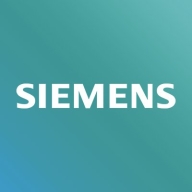

JIRA Portfolio and Polarion ALM compete in the project management software category. JIRA Portfolio has the upper hand with its flexibility, customization options, and agile planning features.
Features: JIRA Portfolio excels with centralized databases, agile planning, and extensive integration capabilities. It is flexible and configurable, supporting diverse software development tools, and offers advanced reporting and customization. Polarion ALM is known for its excellent traceability, robust integration with third-party tools, and strong requirements management and document control. It offers comprehensive end-to-end ALM processes with a focus on variant management.
Room for Improvement: JIRA Portfolio needs better reporting capabilities, a more intuitive interface, and improved integration with other tools. Users note a steep learning curve and insufficient training documentation. Polarion ALM could enhance its planning capabilities, simplify third-party repository integration, and reduce the complexity of its initial setup. It requires considerable customization to reach optimal use, and its user experience could be streamlined.
Ease of Deployment and Customer Service: JIRA Portfolio provides flexible deployment across public and private clouds. Although technical support reviews vary, users often resort to community forums for issue resolution. Polarion ALM supports varied deployment options but faces challenges with a complex setup. Users often resolve issues independently, with minimal reliance on customer support.
Pricing and ROI: JIRA Portfolio has high costs that increase after initial adoption. Despite the expense, users report positive ROI due to enhanced project management and collaboration. Polarion ALM is similarly costly, particularly impacting smaller enterprises, but offers broad functionality in requirement tracking and document management. Its price suits larger enterprises capable of absorbing the associated costs.
| Product | Market Share (%) |
|---|---|
| JIRA Portfolio | 1.2% |
| Polarion ALM | 4.1% |
| Other | 94.7% |


| Company Size | Count |
|---|---|
| Small Business | 15 |
| Midsize Enterprise | 12 |
| Large Enterprise | 32 |
| Company Size | Count |
|---|---|
| Small Business | 9 |
| Midsize Enterprise | 3 |
| Large Enterprise | 12 |
Jira Portfolio is an agile roadmapping tool designed to help teams build plans, envision the big picture, track progress, and share the process with stakeholders.
Jira Portfolio is planned based. A plan in Portfolio is a complete view of the tasks, teams, and release dates for your Jira projects.
Once you start to create a plan, there are three main factors you need to define:
With Jira Portfolio, you can create a visual timeline to gain visibility across each of your teams and projects in a single place from a granular level and review cross-team and cross-project dependencies to prevent bottlenecks. This visibility can help you plan realistic release dates and manage your team’s capacity. The solution allows you to try out different scenarios with your roadmap and resources to help guide your decision making. Once you have a solid plan, you can easily integrate with Jira Software and commit your changes.
Jira Portfolio allows managers to easily add team members. The tool’s powerful scheduling algorithm assigns tasks to teams while taking priorities and dependencies into account so it can create a realistic forecast for project completion.
Jira Portfolio Benefits
Some of the top benefits of using Jira Portfolio include:
Reviews from Real Users
Jira Portfolio stands out among its competitors for a number of reasons. Two major ones are its roadmap creation tools and its flexibility.
Meeta L., a lead product manager at a tech vendor, says, “The valuable features of the JIRA Portfolio are the customization it provides which is very useful and the Agile project management capability.”
Juan P., a senior IT project manager at Avantica, writes, “Portfolio helps us increase the visibility of projects' status and management with remote workers who make up most of the company.”
The world’s first 100% browser-based ALM enterprise solution, which enables seamless collaboration across disparate teams, multi-directionally linked work items, full traceability, accelerated productivity and automated proof of compliance.
We monitor all Enterprise Agile Planning Tools reviews to prevent fraudulent reviews and keep review quality high. We do not post reviews by company employees or direct competitors. We validate each review for authenticity via cross-reference with LinkedIn, and personal follow-up with the reviewer when necessary.